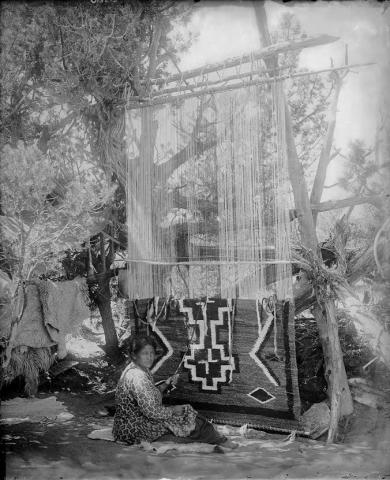Photographer: William Henry Jackson
Navajo woman weaving a blanket, Detroit Photographic Company.
This image of a Navajo woman seated at a loom with a partially finished blanket was selected to represent a collection of 645 18 x 22 inch "mammoth" glass plate negatives photographed by William Henry Jackson ca. 1890-1910.
One of the best known photographers of the American West, William Henry Jackson first came to Colorado in 1873 with the Hayden Survey expedition. In 1879, Jackson settled in Denver where he operated a commercial photo studio for the next 20 years. Jackson’s work captured many Colorado sites including the Garden of the Gods, Pikes Peak, Denver, Ouray, the Georgetown Loop, and the cliff dwellings of what we now know as Mesa Verde. History Colorado holds the largest set of Jackson photographs shot west of the Mississippi: an estimated 10,000 one-of-a-kind glass plate negatives and more than 5,000 original prints.
History Colorado’s collection includes hundreds of “mammoth” glass plate negatives photographed by William Henry Jackson, many of which he took during the Hayden Survey of 1875. Using a large format 20 x 24 inch camera, Jackson was the first to shoot and develop mammoth plates in the field. Considering the conditions- roadless terrain, heavy and fragile equipment, and pack mules for transportation- this was an enormous feat. Jackson once lost a month’s worth of work when a mule lost its footing. In the end, his mammoth prints documented southwestern landscapes in magnificent detail, which helped pique public interest and generate tourism to the region.
History Colorado
1200 N Broadway
Denver, CO 80203
United States

